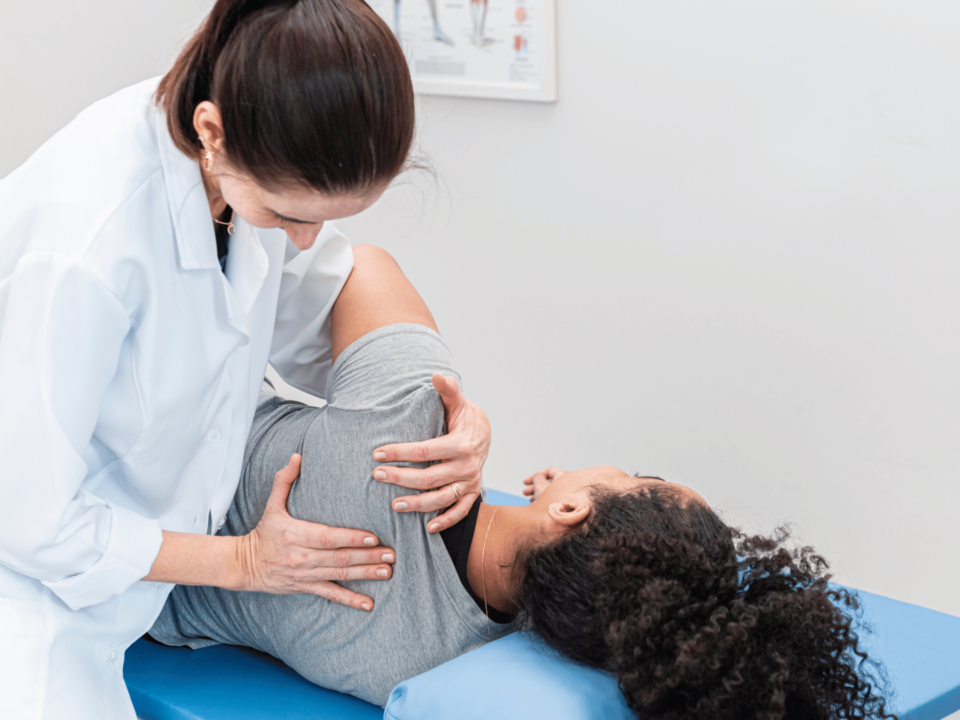
HTO: Understanding High Tibial Osteotomy and Its Role in Knee Pain Relief
September 25, 2024
Comprehensive Overview of the Subtalar Joint: Function, Disorders, and Orthopedic Solutions
November 4, 2024Myxoid cysts are benign, fluid-filled swellings that can develop on the skin, most commonly on the fingers or toes. Despite their benign nature, these cysts can cause discomfort and an array of questions. This article aims to provide a comprehensive understanding of myxoid cysts, including their causes, symptoms, diagnosis, and treatment options.
What Are Myxoid Cysts? A Comprehensive Overview
Myxoid cysts, often referred to as mucous cysts, are an intriguing dermatological anomaly. These small cysts typically form near the joint or at the end of a digit and present as dome-shaped, clear lesions. They are usually filled with a jelly-like substance, primarily composed of hyaluronic acid, which gives them their distinctive feel.
Histologically, myxoid cysts exhibit a unique structure characterized by a mix of connective tissue and mucin, which contributes to their jelly-like consistency. While benign, they are notable for their potential to recur after removal, giving rise to treatment considerations.
Myxoid cysts are most commonly found on the fingers, particularly around the distal interphalangeal joints, but they can also appear on other areas of the body such as the toes and occasionally the lips. Their appearance can vary slightly depending on their location, but they generally maintain the characteristic translucent quality. Patients often report that these cysts can be asymptomatic, although some may experience discomfort or pain, especially if the cyst is located in a high-friction area or becomes inflamed.
In terms of treatment, options range from simple observation to surgical excision, depending on the size, symptoms, and recurrence of the cyst. Aspiration can also be performed to relieve discomfort, although this is often a temporary solution as the cyst may refill. It’s important for individuals to consult with a dermatologist for an accurate diagnosis, as other conditions can mimic the appearance of myxoid cysts. Awareness of these cysts is crucial, not only for aesthetic reasons but also for understanding their benign nature and the potential for recurrence, which can influence treatment decisions and patient management strategies.
Common Causes of Myxoid Cysts: Understanding the Triggers
The exact causes of myxoid cysts are not entirely understood, but several factors are believed to contribute to their formation:
- Joint Trauma: Sometimes, an injury to the joint or surrounding tissues can trigger the development of a myxoid cyst.
- Arthritis: Conditions such as osteoarthritis may lead to the formation of these cysts due to changes in joint stability.
- Genetic Predisposition: Family history can play a role, suggesting a hereditary factor in some cases of myxoid cysts.
While not all cases correlate with injury or arthritis, monitoring joint health might contribute to their prevention. Additionally, repetitive stress on the joints from activities such as typing, playing musical instruments, or engaging in certain sports can exacerbate the risk of developing myxoid cysts. This repetitive strain can lead to microtraumas that may not be immediately apparent but can accumulate over time, resulting in the formation of these fluid-filled sacs.
Moreover, hormonal changes, particularly those associated with aging, can also influence the development of myxoid cysts. As individuals age, the connective tissues may undergo degenerative changes, making them more susceptible to cyst formation. This is particularly evident in older adults who may experience a higher incidence of these cysts due to the natural wear and tear on their joints. Understanding these various triggers can help individuals take proactive steps in managing their joint health and potentially minimizing the risk of developing myxoid cysts.
Recognizing the Symptoms: How to Identify Myxoid Cysts
Identifying myxoid cysts involves recognizing their unique symptoms:
- Location: They often appear on the dorsal surface of the fingers or toes, near the nail bed.
- Appearance: Myxoid cysts are typically smooth, dome-shaped, and can vary in size from a few millimeters to a centimeter.
- Change in Nail Shape: In some cases, these cysts may affect the underlying nail, leading to changes in its appearance.
Apart from their physical attributes, they may cause mild soreness or discomfort, particularly if they press on nearby nerves or joint structures. While not life-threatening, they can be bothersome.
Myxoid cysts are often mistaken for other skin lesions, such as ganglion cysts or warts, which can lead to confusion during self-diagnosis. Ganglion cysts, for example, typically arise from the joints or tendons and are often more mobile than myxoid cysts. Understanding the subtle differences in their characteristics can aid in proper identification. Additionally, myxoid cysts may sometimes present with a translucent quality, allowing for a glimpse of the fluid-filled center, which can be a distinguishing feature.
It is also important to note that myxoid cysts can be associated with underlying joint conditions, such as osteoarthritis. In these cases, the cysts may develop as a result of joint degeneration, leading to the accumulation of mucinous material. This connection highlights the importance of monitoring any changes in the cyst’s size or symptoms, as they may indicate a need for further medical evaluation or intervention. Regular check-ups with a healthcare provider can ensure that any potential complications are addressed promptly.
Diagnosis: How Healthcare Professionals Identify Myxoid Cysts
Diagnosis of myxoid cysts typically involves a thorough examination by a healthcare professional, usually a dermatologist. The evaluation may include:
- Clinical Examination: The physician will inspect the cyst based on its visual characteristics and symptoms.
- Medical History: Questions regarding prior injuries, symptoms, and family history may provide additional context.
- Imaging: In some cases, ultrasound imaging helps assess the cyst and differentiate it from other conditions.
Though most myxoid cysts are easy to identify, a biopsy may be necessary if there is uncertainty regarding the diagnosis or if the cyst appears atypical. This procedure involves taking a small sample of tissue from the cyst, which is then examined microscopically to confirm the diagnosis and rule out other potential issues, such as tumors or infections. The biopsy can provide crucial information about the cyst’s cellular structure, helping to ensure that appropriate treatment options are considered.
In addition to these diagnostic methods, healthcare professionals may also educate patients about the nature of myxoid cysts, emphasizing that while they are generally benign, they can sometimes lead to discomfort or cosmetic concerns. Patients are often encouraged to monitor any changes in the cyst, such as size, color, or tenderness, and to report these changes during follow-up visits. This proactive approach not only aids in effective management but also empowers patients to take an active role in their healthcare journey.
Treatment Options: From Conservative Management to Surgical Intervention
Treatment for myxoid cysts can vary based on the individual’s symptoms and preferences:
- Observation: In many cases, particularly when asymptomatic, no intervention is necessary.
- Needle Aspiration: For symptomatic cysts, fluid drainage can provide immediate relief and might temporarily reduce size.
- Surgical Excision: This is usually recommended for recurrent or bothersome cysts, as it involves complete removal.
Statistically, around 50% of myxoid cysts recur post-surgery, which may prompt patients to weigh their options carefully.
Home Remedies and Self-Care Strategies for Myxoid Cysts
While professional treatment is often necessary, some home remedies may provide symptomatic relief:
- Warm Compress: Soaking a cloth in warm water and applying it to the cyst can help reduce discomfort.
- Gentle Massage: Massaging the area may temporarily relieve pain and discomfort.
- Over-the-Counter Pain Relievers: Non-prescription medications like ibuprofen can help alleviate pain.
Always consult with a healthcare professional before starting any self-care regimen to ensure it aligns with your treatment plan.
The Role of Lifestyle Changes in Managing Myxoid Cysts
Some lifestyle changes may be beneficial in managing myxoid cysts:
- Regular Exercise: Engaging in low-impact activities helps maintain joint health.
- Healthy Diet: A nutrient-rich diet promotes overall health and may reduce inflammatory responses.
- Avoiding Repetitive Strain: Limiting activities that place excessive stress on affected joints can mitigate symptoms.
Integrating these changes into your daily routine can optimize joint function and potentially prevent further cyst formation.
Frequently Asked Questions About Myxoid Cysts
Addressing common queries surrounding myxoid cysts can enhance understanding:
- Are myxoid cysts contagious? No, they are not infectious and cannot be transmitted to others.
- Can they turn cancerous? No, myxoid cysts are benign and do not have the potential to become cancerous.
- What is the recovery time post-surgery? Typically, recovery is a few weeks with proper care.
Being informed can ease concerns associated with this condition.
When to Seek Medical Advice: Knowing the Red Flags
Although myxoid cysts are generally benign, certain symptoms may warrant immediate medical attention:
- Rapid growth of the cyst.
- Severe pain or discomfort.
- Signs of infection such as redness, warmth, or discharge.
If you experience any of these symptoms, it is essential to consult a healthcare professional at Center For Specialty Care for further evaluation and management.
Expert Myxoid Cyst Treatment at Center for Specialty Care
At Center For Specialty Care, we specialize in comprehensive treatment options for myxoid cysts. Our team is dedicated to providing personalized care, from accurate diagnosis to tailored treatment plans designed to relieve discomfort and restore joint mobility. Whether you’re experiencing pain, limited movement, or cosmetic concerns from a myxoid cyst, we offer both non-surgical and minimally invasive solutions to help you get back to your daily activities with ease. Trust our experienced specialists to help you achieve optimal joint health and comfort.




